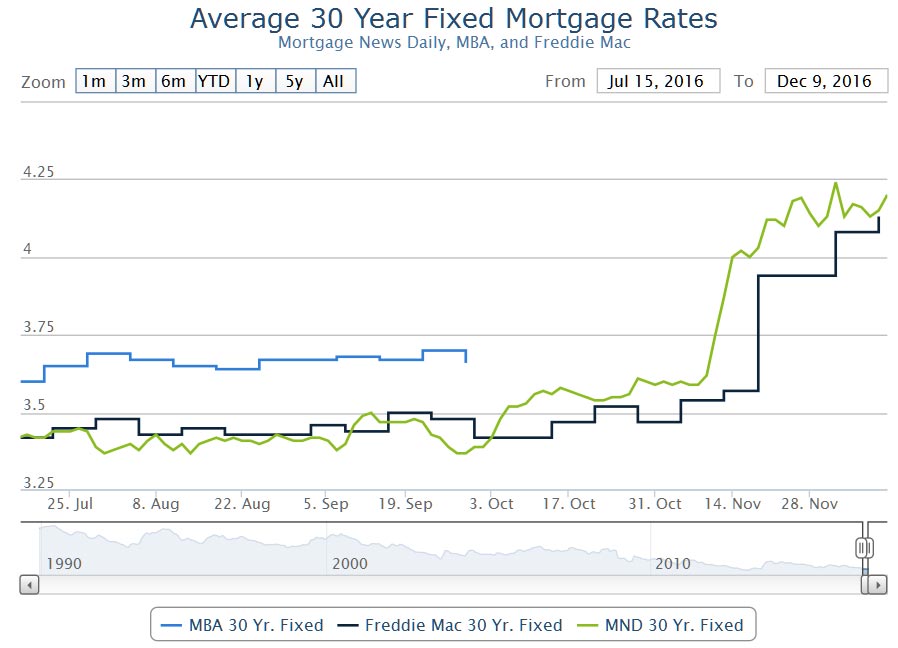According to MortgageNewsDaily, US mortgage rates rose further, continuing their upward trajectory since the US election. As we discussed yesterday, this will have a flow-on effect here.
Mortgage rates rose meaningfully today, with most lenders coming close to the highest levels in more than 2 years (on December 1st). Keep in mind though, that my daily assessment puts rate movement under a microscope, so “rose meaningfully” is a relative term. In fact, many lenders are quoting the exact same contract rates today compared to yesterday, with the only deterioration being seen in the form of higher upfront costs (or lower lender credit, depending on the scenario). Even so, there was enough movement to shift the average lender’s top tier conventional 30yr fixed quote up to 4.25% although 4.125% is nearly as prevalent.
Today’s market movement had to do with investor anxiety heading into a few challenging days at the beginning of next week. In addition to the Fed announcement on Wednesday, Treasury auctions (Where the government sells bonds to investors directly, typically a Tue/Wed/Thu affair) are packed into the first 2 days of the week. Bond market movement (which drives interest rates) is all about supply and demand. When supply is more challenging, it puts upward pressure on rates. Moving the bond market’s key source of “supply” ahead in the calendar and condensing 3 days of supply into 2 definitely makes supply more challenging.
The bottom line is that bond markets are anxious, and that anxiety is being managed by selling bonds. It could absolutely still be the case that bond traders are interested in keeping rates from moving above recent highs, but we won’t have a great sense of that until the middle of next week. The blanket advice for any new loans is to lock in this environment. That said, risk-takers might consider the fact that 10yr Treasury yields (a good proxy for momentum in longer-term rates, like mortgages) have yet to break above 2.50%, despite facing maximum anxiety this afternoon. 2.50% could be used as line in the sand that lets risk-takers know it’s time to lock.

